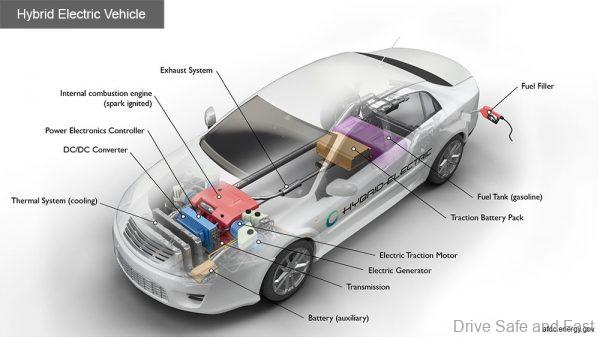Currently, automotive companies are using conventional ATFs for EVT transmissions and CVT fluids for parallel hybrid transmissions as the fluid performance requirements of hybrid vehicles vaguely resemble those of ICE vehicles, negating the need for dedicated hybrid fluids. Though, the presence of an integrated electric motor and transmission in hybrid vehicles raises the issue of fluids encountering the electrical motor. The electrical properties of fluids will need to be examined in these cases to gain a better understanding of the fluid’s electrical conductivity.

Dual-clutch transmissions are generating increasing interest. DCT uses clutch plates, like manual transmissions, rather than relying on torque converters. While the gears can swap automatically, there is the versatility to use paddle shifters to manually shift the gears. Automatic transmission (AT) is a simpler and more convenient option, but there are an ever-growing band of enthusiasts who prefer DCTs and greater control over their gears. DCTs are more efficient than ATs because they use fewer mechanical components and slipping elements and offer a high degree of freedom regarding gear ratios. The improved fuel economy is enticing OEMs to drive production.
There are two types of DCTs. Dry clutch systems have a lower torque application with smaller engines and require manual transmission fluids (MTFs). Wet clutch systems retain a higher torque application and require enhanced n DCT fluids (DCTFs), which combine both the gear protection quality of manual transmission fluids (MTFs) and the clutch friction control of ATFs.
A wet clutch is divided into two designs: a single sump for lubricating both the gear and the clutch, or a separate sump for each. Single sump designs are growing in popularity, but the fluid needs to be explicitly designed to complement both the gear and the clutch. Separate sumps involve using DCTF for the clutch and MTF for the gearbox to ensure optimal performance.
DCTs are growing and are forecast to exceed the growth of ATs globally by 2024. While DCTs are expected to dominate the market for performance vehicles, continuous variable transmissions (CVT) may find applications in small automotive markets.

CVT is an automatic transmission that utilizes a pair of variable-width pulleys, rather than gears, for smooth acceleration. Unlike AT, CVT allows for endless gear ratios and can quickly achieve maximum power out of small engines. Nonetheless, CVTs are only viable for small cars with four-cylinder engines due to the difficulty of retaining optimal power at higher loads. In addition, the absence of the gear shifting sensation changes the experience of driving and can be unnerving for some drivers. Ignoring the unorthodox driving sensation, CVT is more affordable than DCT and advocates simplicity when driving.
A push for dedicated hybrid transmission fluids
CVT uses CVT fluids which are more complex than ordinary ATFs and more specific in their applications. The fluids are formulated with full-synthetic or premium base oils, friction modifiers, anti-wear additives, and shear stability modifiers to improve oil lifetime.
While ATFs focus primarily on friction control to alleviate gear resistance, CVT fluids are formulated to advocate friction to prevent belts from slipping on the pulley system. As a niche application, the future of CVT fluids depends on the level of dominance of DCT fluids and whether consumers can accept the eccentric nature of the transmission.
China continues to advocate AT as the preferred technological route. They claim that ATs are the most developed technology, its driving torque range has the widest applications and is most suitable for heavy traffic environments in China. China’s total automatic transmission passenger car population is no more than 50 per cent today. New passenger car sales with automatic transmission is around 55 per cent currently and is projected to reach 60 per cent over the next few years.
With the growth of e-mobility, there will be a strong push for lubricant manufacturers to create dedicated hybrid transmission fluids. The current technical issue to address is the compatibility of the fluids due to electric motors being comprised of different materials to combustion engines. Electrical systems tend to operate above 48V as opposed to the 12V of standard engines. Fluids must be modified to reach a balance between conducting and insulating electrical currents; if the conduction is too high, there is a risk of current leakage. If the fluid is too effective in insulating, it could potentially cause static build-up and discharge, which can damage the equipment.
Other major areas for improvement include thermal capacity to cool windings and material compatibility. The performance will also need to be modified to include friction, oxidation, and wear control. Higher quality and less polar stocks such as Group 3 and 3+ can advance these fluids’ electrical properties.
By Dr. Raj Shah and Anson Law